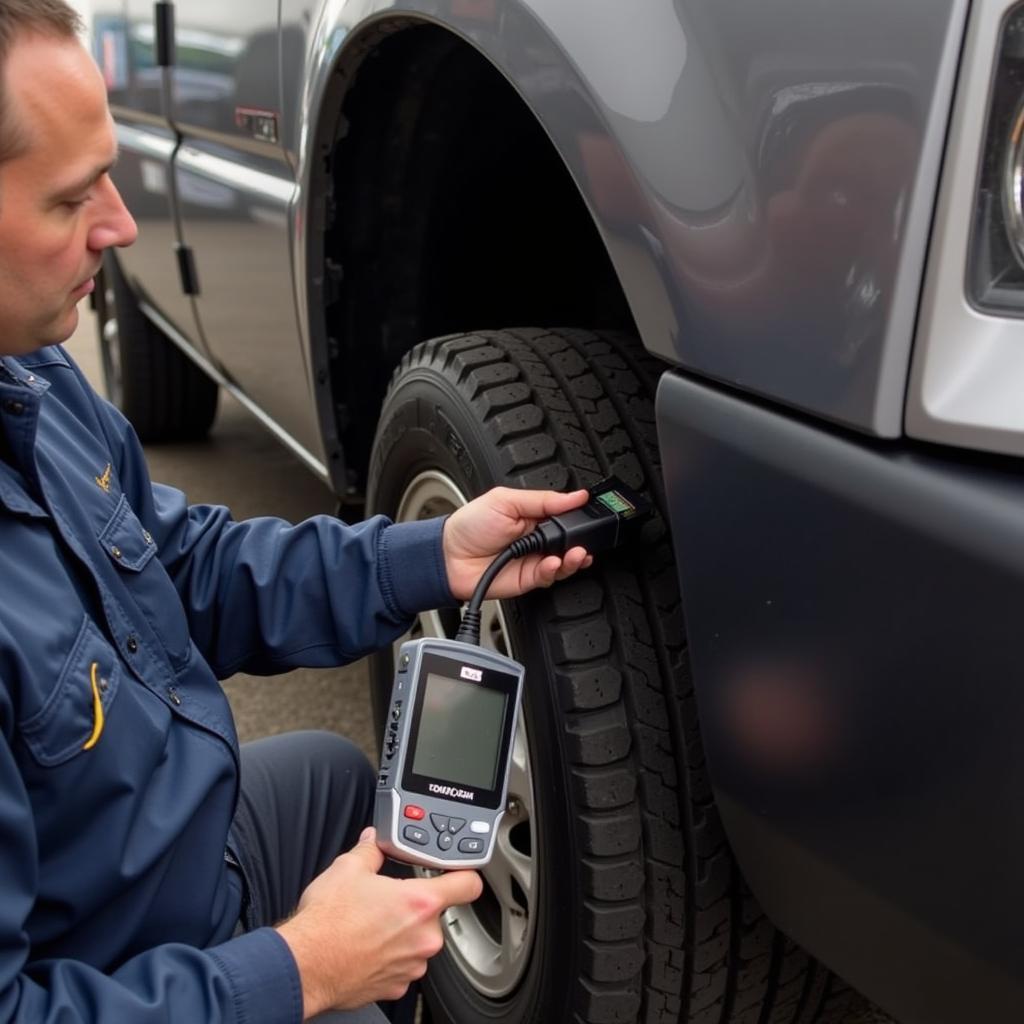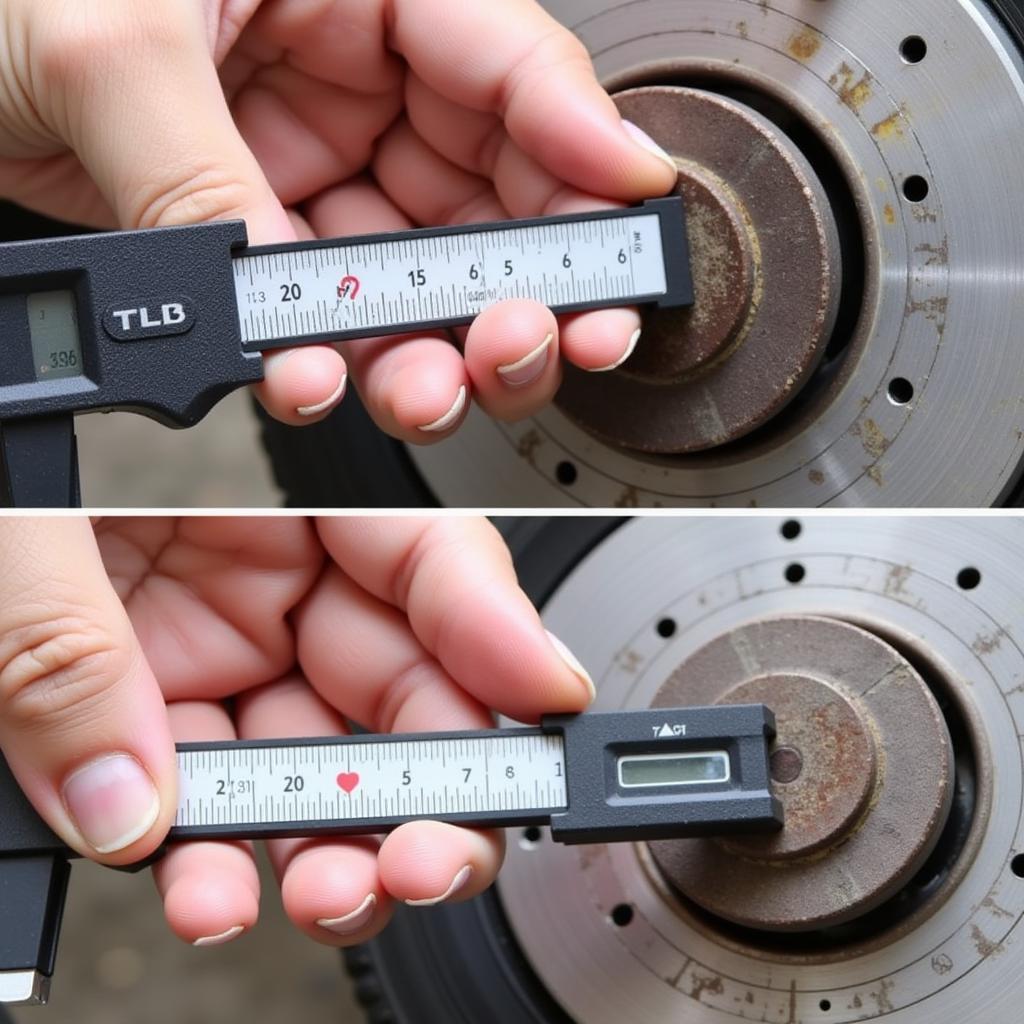Experiencing illuminated ABS and traction control warning lights on your van’s dashboard can be unsettling. These lights often appear simultaneously, signaling a potential issue within your vehicle’s braking system. This comprehensive guide will delve into the common causes of these warning lights, diagnostic approaches, and potential solutions.
Understanding the Warning Lights
The ABS (Anti-lock Braking System) light, often represented by the letters “ABS” encircled, indicates a problem with this crucial safety feature. Similarly, the traction control light, usually depicted as a car with skid marks, suggests an issue with your van’s traction control system. These systems often work in tandem to maintain control and stability during braking, especially on slippery surfaces.
Common Causes of ABS and Traction Control Light Activation
Several factors can trigger both the ABS and traction control lights to illuminate:
-
Faulty Wheel Speed Sensor: The most common culprit is a malfunctioning wheel speed sensor. These sensors monitor the rotational speed of each wheel and relay this information to the ABS control module. A faulty sensor can disrupt this communication, triggering the warning lights.
-
Damaged ABS Tone Ring: Located within the wheel hub assembly, the ABS tone ring works in conjunction with the wheel speed sensor. Damage or debris accumulation on this ring can disrupt signal transmission, leading to warning light activation.
-
Worn Brake Pads: While not directly related to the ABS or traction control systems, excessively worn brake pads can sometimes trigger these warning lights. This is because the reduced brake pad thickness can affect the wheel speed sensor’s ability to read the tone ring accurately.
-
Low Brake Fluid: A drop in brake fluid level can also trigger these warning lights. This is a serious issue as it can indicate a leak in the braking system, compromising braking performance.
-
Malfunctioning ABS Module: In some cases, the ABS control module itself may malfunction. This module is the brain of the ABS system, and any faults within it can lead to various issues, including the illumination of the warning lights.
Diagnosing the Issue
Diagnosing the root cause of these warning lights typically involves using a specialized diagnostic scanner, which can read the fault codes stored in your van’s ABS control module. However, here are some preliminary checks you can perform:
-
Check Brake Fluid Level: Ensure the brake fluid reservoir is filled to the appropriate level. If it’s low, there might be a leak.
-
Inspect Wheel Speed Sensors and Wiring: Visually examine the wheel speed sensors and their wiring harnesses for any signs of damage, corrosion, or loose connections.
-
Check for Diagnostic Trouble Codes (DTCs): If you have access to a diagnostic scanner, connect it to your van’s OBD-II port to retrieve any stored DTCs. These codes can pinpoint the problematic area.
 Mechanic using a diagnostic scanner on a van
Mechanic using a diagnostic scanner on a van
Potential Solutions
The solution to your ABS and traction control light issue will depend on the underlying cause. Here are some possible fixes:
-
Replace Faulty Wheel Speed Sensor: If a faulty sensor is identified, replacing it is a relatively straightforward procedure.
-
Repair or Replace ABS Tone Ring: A damaged ABS tone ring will need to be repaired or replaced.
-
Replace Worn Brake Pads: If your brake pads are worn beyond the recommended limit, replacing them is crucial for both safety and optimal braking performance.
-
Address Brake Fluid Leak and Refill: A brake fluid leak requires immediate attention. Locate and repair the leak before refilling the brake fluid.
-
Repair or Replace ABS Module: In rare cases, the ABS module itself may need to be repaired or replaced. This is a more complex procedure best left to qualified professionals.
When to Seek Professional Help
While some of the diagnostic checks and solutions can be performed by individuals with mechanical knowledge, it’s generally recommended to consult with a qualified mechanic or automotive electrician, especially if:
- You’re uncomfortable working on your vehicle’s braking system.
- You lack the necessary tools and equipment for diagnosis and repair.
- The issue persists even after attempting basic troubleshooting.
Remember, a properly functioning ABS and traction control system is crucial for your safety and the safety of others on the road.
Expert Insight:
“Ignoring illuminated ABS and traction control lights can have serious consequences,” says John Smith, a seasoned automotive electrician with over 20 years of experience. “These systems are interconnected with your vehicle’s braking and stability control, and neglecting them can compromise your ability to control the vehicle, especially in emergency situations.”
Conclusion
Addressing ABS and traction control warning lights promptly is essential for ensuring the safe operation of your van. While some issues may be relatively minor, others can indicate more serious problems within your braking system. By understanding the potential causes, performing preliminary checks, and seeking professional help when needed, you can ensure these crucial safety systems are functioning correctly.
Don’t ignore these warning signs. Take action to ensure your van’s braking system is in optimal condition.
FAQs
Q: Can I still drive my van with the ABS and traction control lights on?
A: While you may still be able to drive, it’s strongly advised against it. These lights indicate a potential issue with your braking system, which could compromise your safety.
Q: How much does it cost to fix ABS and traction control light issues?
A: The cost can vary significantly depending on the underlying cause and your vehicle’s make and model. Simple fixes like replacing a wheel speed sensor may cost a few hundred dollars, while more complex repairs like an ABS module replacement can cost significantly more.
Q: Can a low battery cause ABS and traction control lights to come on?
A: While less common, a severely low battery voltage can sometimes disrupt the operation of various vehicle systems, including the ABS and traction control.
Q: How often should I have my ABS system inspected?
A: It’s generally a good practice to have your ABS system inspected annually or as part of your regular vehicle maintenance schedule.
Q: Can I disable the traction control system on my van?
A: Most vans allow you to temporarily disable the traction control system, usually via a button on the dashboard. However, it’s not recommended to drive with the system permanently disabled as it plays a crucial role in maintaining vehicle stability.
Remember, this guide provides general information and may not cover all possible scenarios. If you’re experiencing issues with your van’s ABS and traction control systems, it’s always best to consult with a qualified mechanic for a proper diagnosis and repair.

